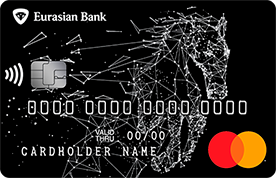This fall, experts are recording a surge in new and modified online fraud schemes. Scammers are more subtle and use multiple communication channels at the same time: calls, SMS, instant messengers, fake websites, and even synthetic voices and videos.
1. “Overdue declaration”
How it works. The attackers call on behalf of government agencies and claim that a citizen has allegedly overdue the filing of a tax return. The victim is intimidated by account blocking and is asked to “verify identity” by dictating a code from an SMS. After that, the scammers gain access to the account and withdraw funds.
What to do. Interrupt the conversation, don’t dictate codes, and don’t click on links. All tax notifications should be checked only through official channels.
2. Fake notifications about “new taxes” and phishing emails
How it works. In mass mailings and letters, attackers claim that a “new tax” has been introduced or that a duty must be paid, providing a link to a fake website. The fake page asks users to enter their phone number and code, after which the attackers gain access to the user’s real bank account.
What to do. Never enter banking details or codes after clicking on the link from the email. If you have received a letter on behalf of the Bank, please call the Bank at the official number indicated on the website.
3. “Calls and messages from the school”, fake contests and “erroneous transfer”
How it works. Scammers pretend to be school employees or contest organizers, send phishing links, or report a “random transfer” asking for a refund via a link/QR. Sometimes they use blackmail – false threats to appeal to the authorities.
What to do. To parents: do not follow the links coming from the “school” – confirm the information directly from the administration. In case of an “erroneous transfer”, contact the Bank before any refund action.
4. “Reconfiguring gas equipment” and other telephone parables
How it works. Under the guise of housing and communal services or gas service employees, they offer to issue contracts or reconfigure equipment through phishing resources. Then they require you to confirm the code via SMS or transfer funds to a “secure” account.
What to do. Please check the work and service notifications directly with the service provider using the official phone number.
5. Phishing clones of marketplaces and payment services
How it works. The attackers create exact copies of marketplace sites, delivery services, and payment forms – the user enters the card details on a fake page, and they are immediately stolen.
What to do. Check the website domain, bookmark popular services, and pay for purchases only through official apps.
6. Investment and cryptocurrency “pseudo-startups”
How it works. They offer “guaranteed profitability” through private chats or pseudo-projects of tokens; they involve through personal recommendations and deepfake videos with the participation of “famous” people. This is often followed by an offer to invest money in a crypto account or an exchanger.
What to do. Be careful about promises of high returns. Invest only through licensed platforms and check the reputation of the project.
7. Shadow crypto exchanges and “droppers”
How it works. Illegal exchangers and fake wallet networks are used for money laundering: funds pass through the transfer chain and disappear. Recently, investigations have led to the closure of dozens of illegal sites, with millions of USDT seized.
What to do. Use only licensed crypto exchanges; do not become a “dropper” – you can incur criminal liability for accepting and transferring funds to other people’s accounts.
Cybercriminals are becoming more inventive, so attentiveness and knowledge of the basic rules are the best protection against any schemes.





